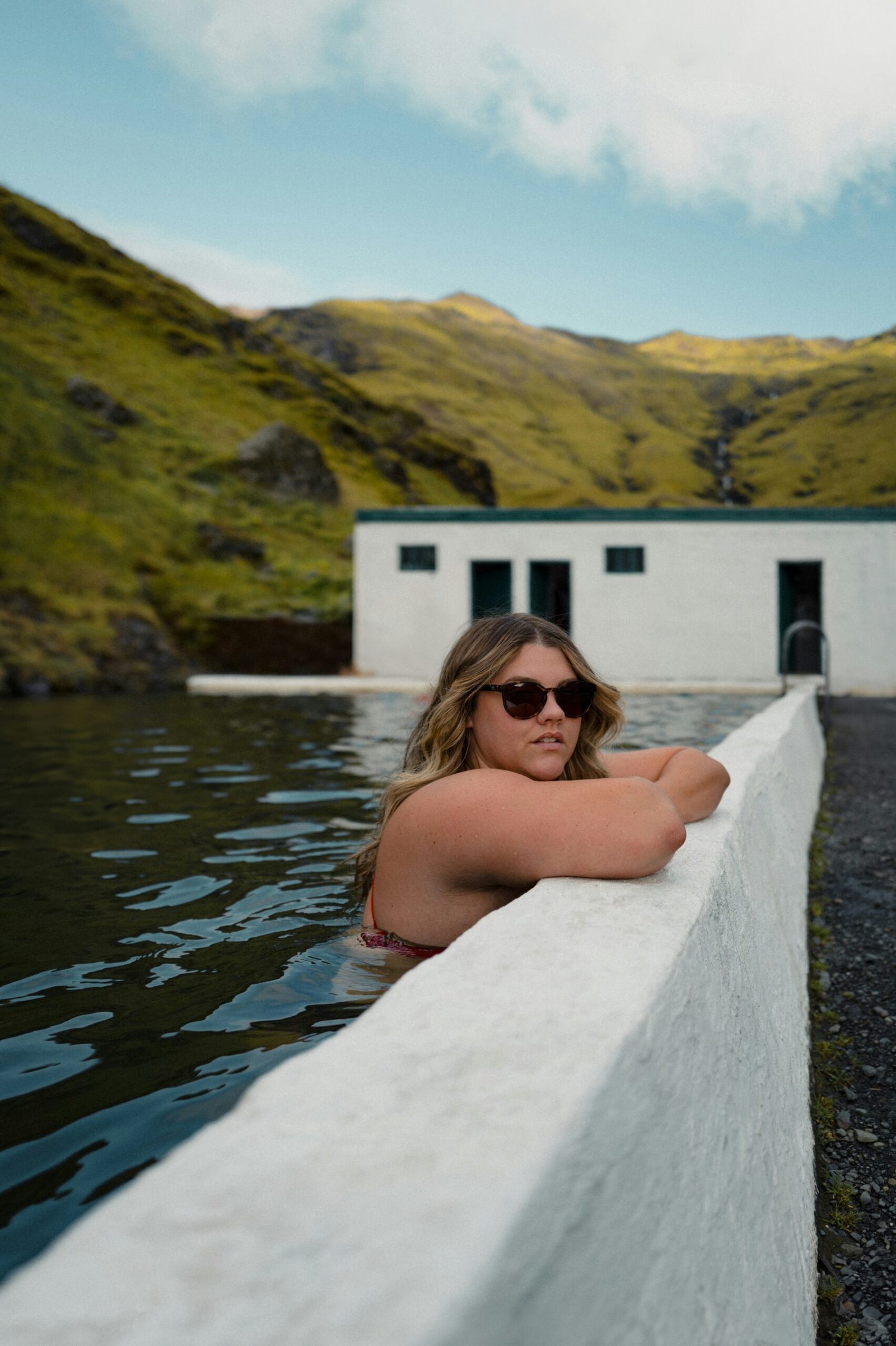
Understanding the Basics of Hot Spring Bathing Attire
Hot springs, revered for their therapeutic benefits, come with specific dressing etiquettes rooted in tradition and culture. Understanding the preferred attire ensures an enjoyable and respectful experience. Typically, hot spring bathing suits vary by region, but a common thread is the emphasis on natural and breathable fabrics, which enhance comfort while soaking in the mineral-rich waters.
In many traditional settings, modesty plays a significant role. For instance, in Japanese onsen culture, nudity is the norm, with separate facilities for men and women. Visitors are required to thoroughly clean themselves before entering the communal bath, emphasizing hygiene and respect for mineral water purity. In contrast, some Western hot springs might allow discrete, lightweight swimwear, prioritizing comfort and modesty.
Fabrics like cotton, linen, and bamboo are ideal for hot spring attire due to their breathability and natural properties, which help regulate body temperature. Synthetic materials are generally discouraged as they may retain heat and discomfort. Additionally, the application of modesty varies greatly across cultures. While some hot springs may call for minimalistic attire, others might accept full-coverage swimsuits, especially in conservatively leaning regions.
Regional differences further highlight the diverse bathing customs. For example, in Iceland, geothermal pools encourage the use of swimsuits, whereas in Turkey, the experience of hammams may involve covering the body with a pestemal, a traditional Turkish towel. Understanding these nuances not only shows cultural respect but also enhances one’s overall experience at these serene retreats.
In conclusion, the appropriate dressing for hot spring bathing is multi-faceted, intertwining tradition, cultural values, and practical fabric choices. Embracing these norms can lead to a more fulfilling and respectful hot spring experience, be it in the calming onsens of Japan or the rustic geothermal pools of Iceland.
Selecting the Right Materials for Hot Spring Attire
When preparing for a hot spring bath, the selection of suitable attire is pivotal to ensure both comfort and durability. Key considerations such as lightweight fabrics, quick-drying properties, and resistance to mineral-rich waters can significantly enhance the overall experience. Let’s delve into various materials like bamboo, cotton, and specific synthetics, evaluating their benefits and potential drawbacks.
Bamboo fabric is highly recommended for hot spring attire due to its numerous attributes. As a natural fiber, it is exceptionally soft and breathable, promoting comfort. Bamboo’s inherent quick-drying nature ensures that the fabric remains lightweight even when wet, a crucial factor in a hot spring environment. Although bamboo fabric’s durability is commendable, exposure to high mineral content over extended periods may cause gradual wear.
Cotton, another natural material, stands out for its comfort and absorbency. This breathable fabric is ideal for those who prefer a natural, skin-friendly option. However, cotton does have its limitations. It tends to retain more water compared to other materials, which may result in a heavier, less appealing garment post-bath. Additionally, cotton may deteriorate faster when consistently exposed to the minerals in hot spring waters.
Synthetic fabrics such as polyester and nylon offer a versatile alternative. These materials are designed to be lightweight, rapidly drying, and resistant to wear and tear, making them particularly suitable for hot spring bathing. Polyester, in particular, is known for its durability and resilience against mineral exposure. Nevertheless, it is essential to consider that some individuals may find synthetics less comfortable against the skin compared to natural fibers.
To summarize, the choice of material for hot spring attire should balance comfort, quick-drying properties, and durability against mineral exposure. Bamboo fabric offers a superb blend of softness and quick drying, while cotton provides unmatched comfort yet absorbs more water. Synthetics like polyester excel in durability and rapid drying but might trade off some comfort. By considering these attributes, you can make an informed decision, ensuring an enriching and comfortable hot spring bath experience.
Accessory Essentials for Optimal Comfort and Safety
When preparing for a hot spring bath experience, selecting the right accessories is crucial to ensure both comfort and safety. One essential item is suitable footwear that can navigate wet and potentially slippery surfaces with ease. Water shoes or sandals, designed specifically for aquatic environments, offer excellent grip and stability, minimizing the risk of slips and falls. Their lightweight and quick-drying nature make them an ideal addition to your hot spring attire.
Another important accessory is a head towel, particularly useful for protecting your hair from the mineral-rich water that is characteristic of hot springs. These minerals, while beneficial for the skin, can sometimes cause dryness or brittleness in hair. Using a head towel not only helps to safeguard against this but also adds a layer of comfort, keeping hair dry and out of the way during the bath.
To keep personal items secure and protected from water exposure, a waterproof bag is indispensable. This bag can store essentials such as your phone, wallet, and even toiletries, ensuring that they remain dry and safe throughout your visit. The peace of mind that comes with knowing your belongings are well-protected allows you to fully immerse yourself in the relaxing experience of the hot spring.
Lastly, the convenience of a quick-dry robe or cover-up cannot be overstated. These garments are designed to dry rapidly, providing ease and comfort when moving between the dressing area and the hot spring itself. A quick-dry robe is not only functional but also helps maintain modesty and warmth, particularly in cooler outdoor settings.
Incorporating these essential accessories into your hot spring bath routine will significantly enhance your overall experience, making it both safe and enjoyable. Thoughtful preparation with the right gear ensures that you can fully appreciate the unique and restorative properties of hot spring bathing.
Etiquette and Dressing Rooms: Preparing for a Hot Spring Visit
When visiting a hot spring, it is essential to respect local customs and etiquette, starting with the dressing room experience. Upon arrival at the facility, you will first enter the main reception area where you might be required to check-in. After registering, you will be directed towards the dressing rooms. Here, you’ll need to remove your shoes and store them in a designated area, typically near the entrance to maintain the cleanliness of the space.
In the dressing rooms, you will find lockers or baskets to store your belongings securely. It is customary to undress fully before entering the bathing area, as most hot springs require nude bathing to ensure proper hygiene and a uniform experience. Place your clothing and valuables in the locker or basket provided and take the locker key with you or keep the basket in a safe, nearby location.
Before entering the hot spring, it is crucial to shower thoroughly. Hot springs prioritize cleanliness to maintain the purity of their waters. Showering stations with soap, shampoo, and other amenities are typically available. Ensure you rinse off any soap residue completely and, if necessary, tie up long hair to prevent it from contaminating the spring. This respect for cleanliness helps maintain the hot spring’s pristine condition for all users.
Adherence to local rules and regulations is fundamental. Some hot springs may have additional guidelines concerning attire, such as prohibiting the use of towels in the water or covering tattoos, which are considered offensive in some cultures. Be observant of posted signs and be courteous to other patrons to create a respectful and tranquil environment.
After enjoying your dip in the hot spring, return to the dressing room to transition back to regular clothing. Dry yourself off thoroughly to avoid wetting the dressing area. This not only guarantees personal comfort but also upholds the room’s cleanliness for subsequent users. Ensure all belongings are collected before exiting, and return the locker key if applicable.
By following these steps, you can ensure a respectful and enjoyable hot spring experience for yourself and others.

